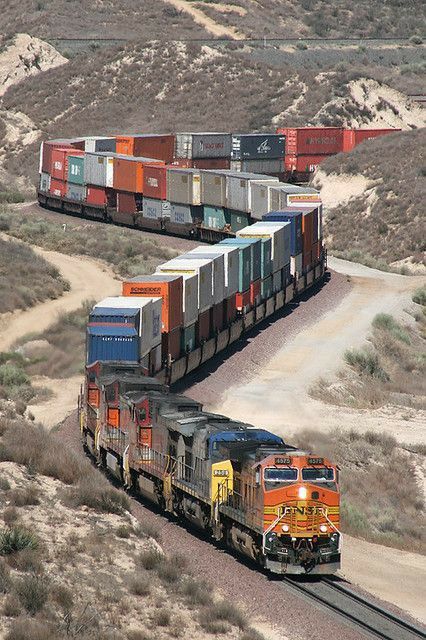- By TOP CHINA FREIGHT
- August 22, 2025
- Rail Freight
With growing trade between China and the UK, businesses need logistics solutions that are reliable, cost-effective, and timely. While air freight is fast but expensive and sea freight is cheap but slow, rail freight offers a balanced solution, combining speed, affordability, and sustainability. This guide covers routes, transit times, container options, costs, customs requirements, challenges, and actionable tips, ensuring your shipments arrive efficiently.

1.Why Rail Freight is the Optimal Choice
18–25 days vs 30–45 days for ocean freight
40–60% less per container compared to air freight
Less affected by port congestion and weather
Lower CO₂ emissions per ton-kilometer
Many operators provide integrated services, including pickup and delivery
2.Main Rail Routes from China to the UK
| Route | Origin Cities in China | UK Destinations | Transit Time |
|---|---|---|---|
| Northern Route | Xi’an, Chongqing, Zhengzhou | London, Birmingham | 18–22 days |
| Central Route | Wuhan, Chengdu | Manchester, London | 20–23 days |
| Southern Route | Shenzhen, Yiwu, Guangzhou | London, Liverpool | 22–25 days |
| Trans-Siberian Route | Chengdu, Xi’an | London, Edinburgh | 21–24 days |
Transit times may vary due to customs processing, border procedures, and intermediate handling.
3.Types of Rail Freight Services
| Service Type | Description | Best For |
|---|---|---|
| FCL (Full Container Load) | Dedicated container for a single shipment | Large-volume or high-value cargo |
| LCL (Less than Container Load) | Consolidated shipment sharing container space | Small to medium-sized businesses |
| Refrigerated Containers | Temperature-controlled transport | Perishable goods like food or pharmaceuticals |
| Express Rail | Priority shipping with faster transit | Urgent or high-value shipments |
4.Step-by-Step Shipping Process
| Step | Action | Details |
|---|---|---|
| 1 | Choose Service | FCL, LCL, reefer, or express rail |
| 2 | Package Cargo | Palletize, label, secure packaging |
| 3 | Prepare Documentation | Commercial invoice, packing list, HS codes, export declaration |
| 4 | Book Rail Freight | Contact a forwarder or rail operator |
| 5 | Loading & Departure | Container sealing and terminal inspection |
| 6 | Transit Monitoring | Track shipment through operator platforms |
| 7 | Customs Clearance in UK | Submit required documents, pay duties/VAT |
| 8 | Final Delivery | Truck delivery from rail terminal to warehouse or client |
5.Detailed Cost Comparison
| Mode | Transit Time | Cost per 20ft Container | Best For |
|---|---|---|---|
| Air Freight | 3–7 days | $10,000–$15,000 | Urgent, high-value goods |
| Rail Freight | 18–25 days | $4,500–$7,000 | Medium-volume shipments |
| Sea Freight | 30–45 days | $2,000–$3,500 | Bulk commodities |
Cost Influencing Factors
- Container type: reefer or specialized containers cost more
- Distance & route: Northern vs Southern vs Trans-Siberian
- Cargo volume: LCL may cost more per ton than FCL
- Customs duties and VAT in UK
- Terminal handling fees and peak season surcharges
6.Additional Key Considerations
Documentation and Compliance
- Commercial invoice, packing list, and HS codes
- Export declaration for China
- Certificates for specialized goods (food, chemicals, electronics)
Insurance
- Recommended for high-value, fragile, or perishable items
- Protects against damage, theft, or loss during transit
Tracking & IT Integration
- Online tracking portals from rail operators or forwarders
- Integration with e-commerce or supply chain software
- Real-time alerts for proactive handling of delays
Intermodal Solutions
- Combine rail with sea or road transport for cost-efficiency
- Example: Rail to Rotterdam, then truck to London
7.Benefits vs Challenges
| Benefits | Challenges |
|---|---|
| Faster than sea, cheaper than air | Limited flexibility compared to air freight |
| Environmentally friendly | Some UK cities less accessible by rail |
| Reliable schedules | Minor delays may occur at customs |
| Supports refrigerated cargo | Risk of handling damage at intermediate terminals |
| Integrated logistics services | Slightly higher cost than sea for very large volumes |
8.Tips to Optimize Rail Freight China to UK
1.Select an experienced forwarder
Ensures smooth customs clearance and proper documentation
2.Use standardized containers
Reduces handling damage
3.Track shipments in real-time
Manage delays proactively
4.Consolidate small shipments
LCL reduces per-unit costs
5.Insure high-value cargo
Protection during transit
6.Plan for peak season
Reserve container space early
7.Consider intermodal solutions
Optimize speed and cost
9.Transit Time Overview
| Service | Transit Time | Use Case |
|---|---|---|
| Standard Rail | 18–25 days | Most goods including electronics, machinery |
| Express Rail | 15–20 days | Urgent shipments, high-value cargo |
| Intermodal (Rail + Sea) | 25–30 days | Bulk shipments needing door-to-door delivery |
Conclusion
Rail freight from China to the UK is a reliable, cost-effective, and environmentally friendly solution for medium-volume and time-sensitive shipments. By choosing the right route, container type, and freight forwarder, preparing accurate documentation, and tracking shipments, businesses can optimize their supply chains, reduce risks, and maintain predictable delivery schedules. For companies looking for a faster alternative to sea freight without air freight costs, rail freight is the most strategic choice for China-UK logistics.
Need a Shipping Quote?
If you want expert guidance and peace of mind, our team is ready to assist.
TJ China Freight offers tailored solutions to help businesses of all sizes ship more reliably from China.
FAQs
Q1:Can small shipments use rail freight?
Yes, via LCL consolidation.
Q2:Are refrigerated containers available?
Yes, for perishable goods like food or pharma.
Q3:Is rail freight cheaper than air freight?
Yes, 40–60% cheaper while still faster than sea.
Q4:Are there customs duties in the UK?
Yes, VAT and import tariffs apply depending on HS codes.
Q5:What goods are suitable for rail freight?
Electronics, machinery, automotive parts, textiles, e-commerce products, and refrigerated items.



